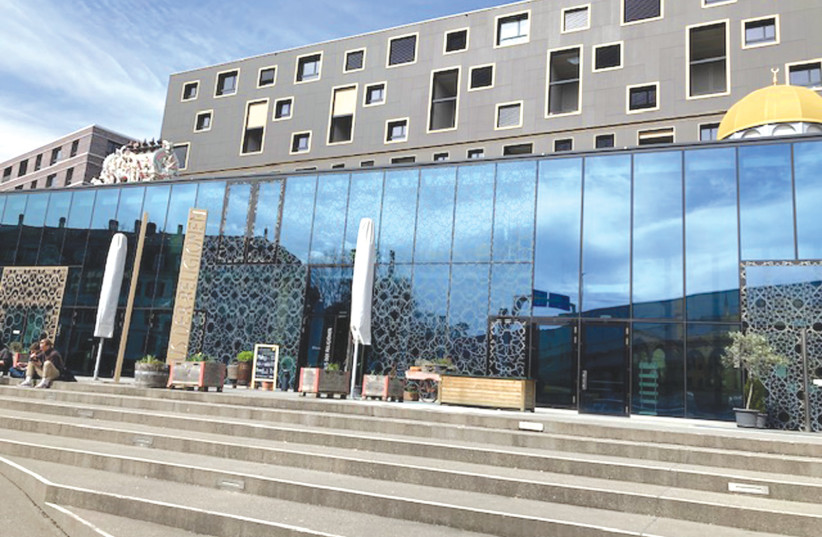Twenty-first century Switzerland is an open inclusive country, welcoming to all regardless of religion, ethnicity or race. So when Sasikumar Tharmalingam, a dark-skinned, 14-year-old young man fleeing the ravages of civil war in his home country of Sri Lanka arrived in Bern in 1989, it was not long before he found a home, a community and an occupation.
After suffering a harrowing and dangerous journey, Sasikumar found refuge at a group refugee center. He was young, alone, and suffering from the loss of his home and family along with severe culture shock, which increased as the trauma of his experience faded into the past.
It was a difficult time for him, searching for a sense of belonging in a culture so different from his own. Over the years, he and several other young men in similar circumstances, found themselves drawn toward the Hindu Religion. After several pilgrimages to India and years of study with a guru, they were all initiated as Hindu Priests.
During his time in India – along with the Hindu Religion – Sasikumar studied the ancient Ayurvedic medicinal healing and dietary methods and became an avid practitioner. When he returned to Switzerland he had direction on two fronts; religion for nourishing the spirit, and cooking for nourishing the body.
Multi-cultural groups of expats who had immigrated to Switzerland around that time recognized their financial limitations in terms of establishing their own houses of worship and community gathering places. To solve their individual problems, they joined forces and reached out to the Bern city government for help in creating a center where the different religions could worship, practice their beliefs and be part of a greater community.

After years of negotiations, an agreement was reached and a building was constructed, accommodating each member’s specific needs. Referred to as the “House of Religions – Dialogue of Cultures,” it is a loose affiliation of religious groups that have come together to share space, costs, and not incidentally, to encourage understanding and tolerance of each other’s beliefs.
To quote from their operating creed: “A dargah, church, mosque, temple and Buddhist center are connected by an open and neutral meeting area, which forms the heart of the House and invites visitors to participate in interreligious and intercultural dialogue.”
Just a short tram ride will take you from Bern’s historic Altstadt (Old Town) to a newer section of the city, where you will find the House of Religions – Dialogue of Cultures located on the Europaplatz.
Eight religious groups share the communal spaces which comprise a restaurant, a library, meeting and conference rooms. Jews, Baha’i and Sikhs contribute to and participate in the center, while Hindus, Muslims, Christians, Alevi and Buddhists also have their own designated areas of worship.
This was a perfect solution for Sasikumar; a place where he could accomplish his goals both as a Hindu Priest and as cook in its restaurant called Vanakam.
Norwegian immigrant Rabbi Michael Kohn
ENTER RABBI Michael Kohn, another immigrant to Switzerland whose home country was Norway. Contrary to Sasikumar, Kohn did not flee his country for political reasons, but chose to move there to become head of the Jewish Community of Bern. As such, he frequented the House of Religions and was intrigued by Sasikumar’s cooking style and use of exotic spices, so different from those used in kosher food.
These two men, a rabbi and a Hindu priest, came together to work out a system of cooperation in precisely the manner and purpose for which the House of Religions was created. Sasikumar, eager for collaboration, set up a kosher kitchen at Restaurant Vanakam under the supervision of Rabbi Kohn who lights the stove and takes part in the cooking to ensure that it satisfies the requirements of his Orthodox community.
There are also two kitchens side-by-side at Restaurant Vanakam; one strictly kosher with all ingredients used in cooking approved by Rabbi Kohn and Kashrut certified, and the other used by the other communities that the center serves.
On the day we visited, we were served a traditional lunch of rice with three cooked vegetables, and in my case, a good helping of Raita (yogurt) to cool down Sasikumar’s Tamil style of cooking. Prior to lunch, a cup of spicy ginger tea is offered to cleanse the palate and warm the stomach for the coming meal. We were joined for lunch by Dr. Karin Mykytjuk, manager of the center and Noemi Knoch, a member of the Jewish community and a staff worker there.
After lunch, Knoch took us on a tour where we visited the Hindu temple which, in accordance with the tenets of the religion, was topped with a sculpture bursting through the ceiling and open to the sky. In this way, the exposed earth on the temple floor and the sky above, always remain connected. A special permit was required to allow this brightly colored construction to poke out of the top of the building.
Knoch introduced us to the Imam at the Mosque where – after a group of young men rushed out after Morning Prayer – a solitary man sat deep in meditation. We looked into the Baki room where music practice was taking place – no pictures please – and we also stopped by the Buddhist and Christian sections and visited the various rooms shared by all the communities.
We were pleasantly surprised when Rabbi Kohn stopped by with his 11-year-old son for a chat and, of course, a meal. Kohn is a young, articulate, progressive Orthodox Rabbi and the enthusiasm with which he attacked the lunch prepared by Sasikumar, and the delight with which Sasikumar delivered his plate, was evidence of their mutual admiration and friendship.
These two men are a stunning example of what can be accomplished when cultures embrace what unites us all… our shared humanity.
If you want to know more about these hands across the aisles stories please visit:
For the center: https://haus-der-religionen.ch/
For the restaurant: https://haus-der-religionen.ch/angebote/restaurant-vanakam/
